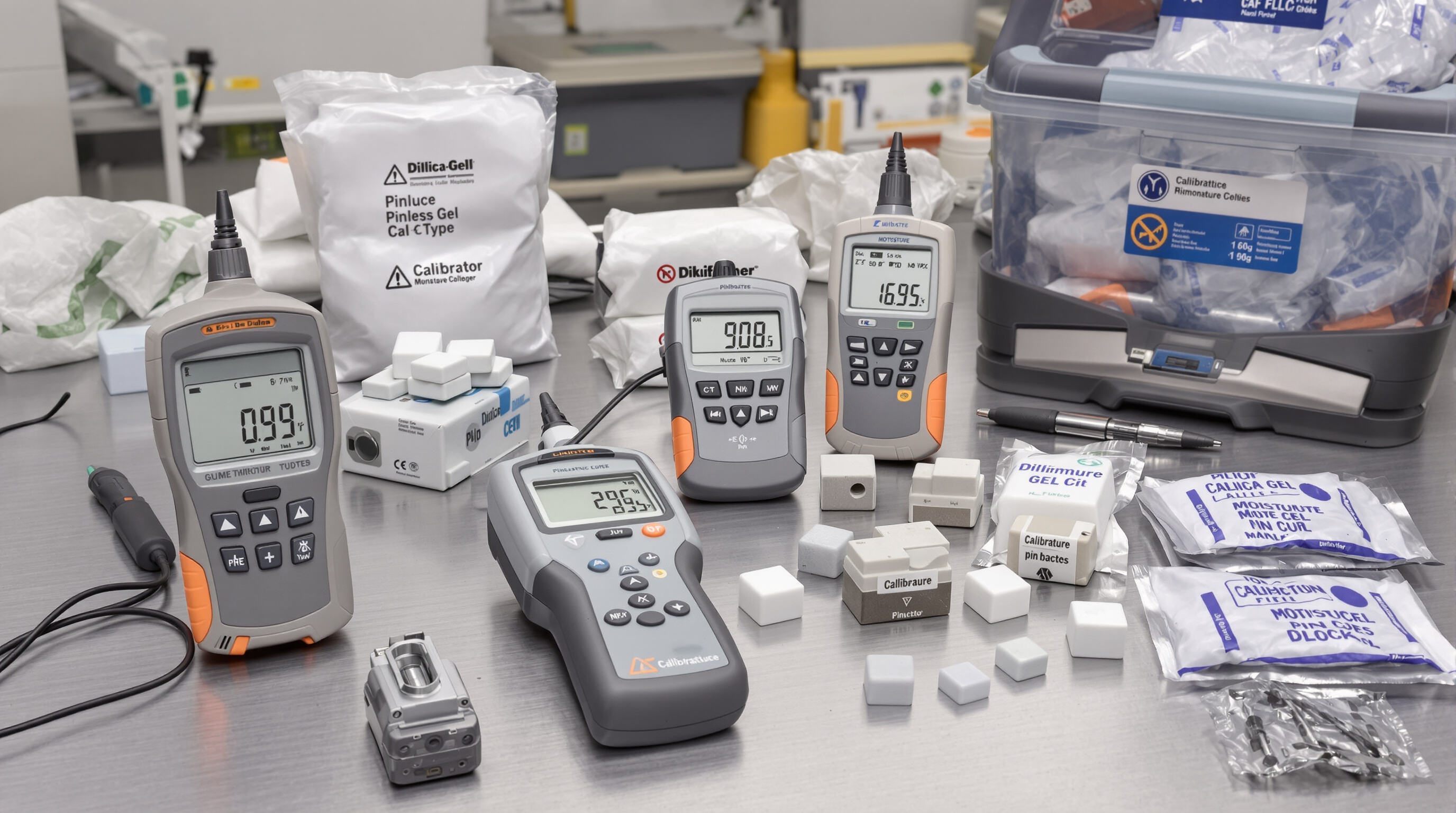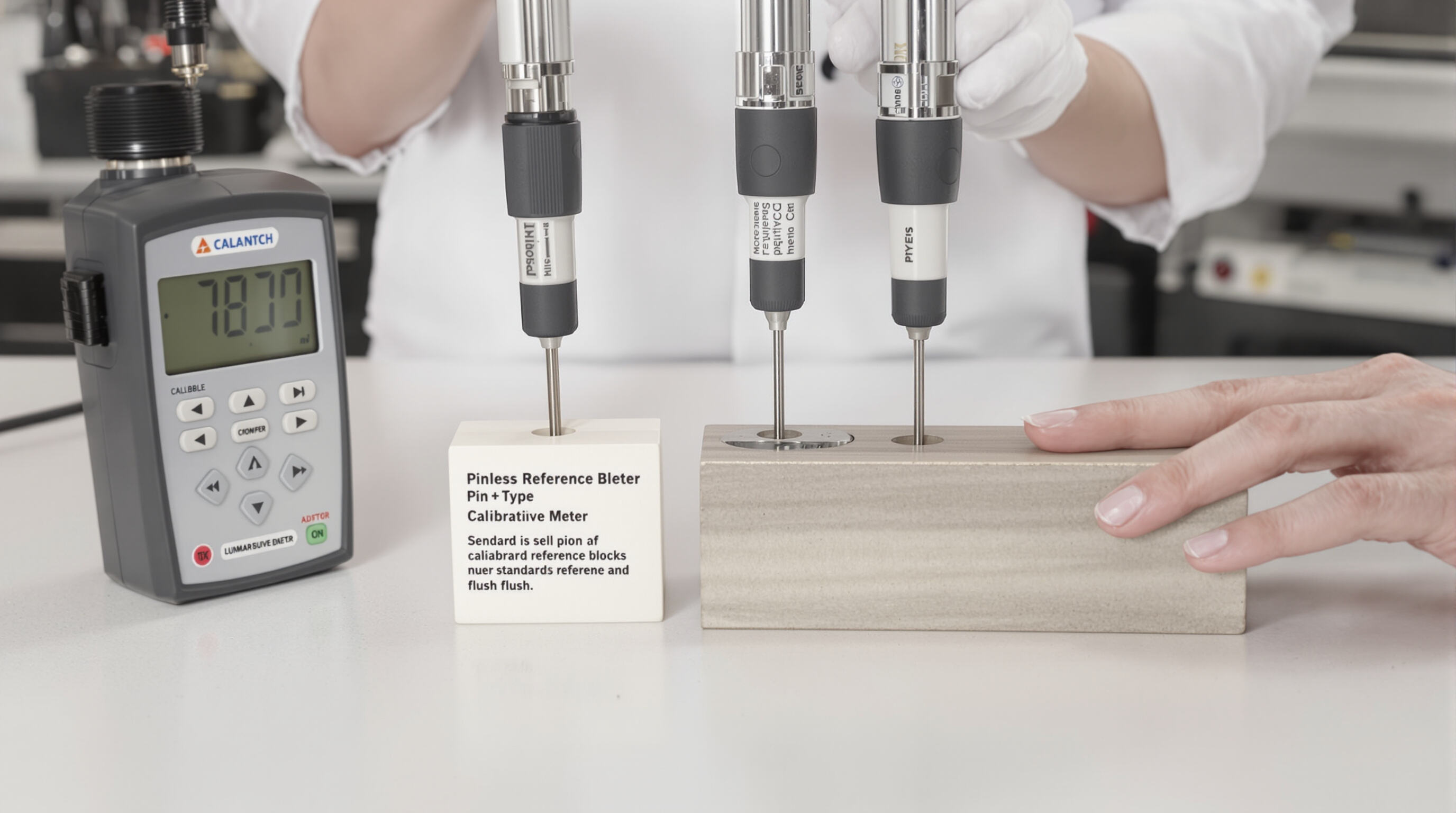Understanding Moisture Meters Calibration and Why It Matters
What Is Moisture Meter Calibration and Why It Matters
Calibration means adjusting moisture measuring tools against known standards so they give accurate readings. Small errors matter a lot here too small changes of around 1 to 2 percent can mess up important decisions about materials. For example in wood processing plants where moisture levels are checked regularly, if the meter isn't calibrated properly, it might tell workers the wood is drier than it actually is. This leads to over drying which causes cracks and wastes about 17% of all processed lumber according to industry reports. Farmers face similar issues when checking soil moisture without proper calibration. Getting wrong readings about how wet the ground really is often results in either too much or too little watering, cutting down on crop production by as much as 30%. When done right, calibration turns these basic measuring devices into something far more useful for making smart decisions throughout various industries.
The Impact of Inaccurate Readings on Material Assessment
Getting moisture readings wrong creates all sorts of headaches for businesses both operationally and financially. When concrete moisture is overestimated, construction crews end up waiting around for no good reason while paying workers sit idle at $45 an hour. The drywall situation is equally problematic too many times contractors miss hidden damp spots which then lets mold start growing within just two days if left unchecked. Wood producers face their own challenges as well faulty moisture meters sometimes label lumber at 19% MC when it's actually still wet inside, resulting in warped flooring and cabinetry later on. All these measurement mistakes add up across projects, pushing costs beyond budget expectations by roughly 12% on average. That's why reliable testing equipment isn't just nice to have it's absolutely essential for anyone dealing with building materials day in and day out.
How Calibration Ensures Compliance with Industry Standards
Keeping equipment properly calibrated means following important standards like ASTM D4442 for wood testing, ISO 24265 when dealing with building materials, and ASABE S358.3 for agricultural applications. When auditors come around for their ISO 9001 checks, having records of regular calibrations shows we're doing our job right. This documentation also helps meet requirements under IICRC S500 standards for fixing water damage problems. The consequences of skipping calibration can be serious though. Insurance companies have started denying claims related to structural moisture issues after reviewing cases from 2023. So calibration isn't just something technicians worry about it's actually a protection against both legal troubles and big financial losses down the road.
Factors That Affect Calibration Frequency and Accuracy

Moisture meters require tailored calibration schedules to maintain precision. Three primary factors influence both calibration frequency and measurement accuracy.
Usage Intensity and Its Effect on Calibration Needs
In tough environments like construction zones or farmland, most meters need checking every month to stay accurate. When these tools get stuck repeatedly in thick substances, their internal parts start wearing down faster than normal. Take for instance a meter that tests fifty concrete slabs each workday versus another only occasionally used in a woodshop setting. The constant pounding against hard surfaces really takes its toll on those sensitive components inside. And let's face it folks, when something gets used all the time, there's just more chance of measurement errors creeping in. That means technicians have to check them more often to make sure readings remain trustworthy despite all that heavy duty action.
Environmental Conditions: Humidity, Temperature, and Dust Exposure
Research published in 2023 shows that when meters are subjected to humidity levels over 80%, they need recalibration about 30% more frequently compared to equipment kept in controlled environments. Daily temperature swings greater than 15 degrees Fahrenheit tend to mess with electrical resistance measurements. And don't forget about airborne dust particles either these tiny invaders actually form misleading contact points in pinless measuring tools. For best results, many technicians store their devices inside low humidity containers packed with silica gel packets. This simple step goes a long way toward maintaining sensor reliability and minimizing how much outside conditions affect measurement accuracy in real world situations.
Material Type Variability and Sensor Stress Over Time
When working with mixed materials such as reclaimed wood or gypsum boards, sensors face all sorts of challenges because these materials have different densities and conductivities, which leads to measurement drift over time. The pin type meters get pretty beat up too. They tend to corrode about twice as quickly when placed on salt treated lumber compared to what happens with regular kiln dried softwoods. Most equipment makers suggest cutting down calibration checks by around a quarter whenever there's a switch between different material types, say going from testing soil samples to checking out drywall sections. This helps keep readings accurate despite the changing conditions materials throw at them.
Step-by-Step Guide to Calibrating Pin and Pinless Moisture Meters

Preparing Your Pin-Type Moisture Meter for Calibration
Clean the electrodes with isopropyl alcohol to remove debris that can skew readings. Inspect pins for bending or damageâmisaligned probes can introduce errors up to 5% moisture content. Power on the device in a stable environment (20â25°C, 40â60% RH) to minimize thermal drift before beginning calibration.
Using Calibration Check Standards for Pinless Meters
Pinless meters require calibration blocks with known dielectric properties. Place the sensor plate flush against the block, applying even pressure to eliminate air gaps. Uneven contact accounts for 30% of calibration discrepancies in non-invasive models, so consistent technique is essential.
Executing the Calibration: Zero Check and Reference Adjustment
When working with pin-type moisture meters, the process starts by sticking those metal probes into something called a calibration standard. Most people use a 15% moisture content simulant for this purpose. After inserting them properly, go ahead and tweak that zero point setting until it matches what should be expected. For those pinless versions out there, things work a bit differently. These usually require a two step calibration approach. First up is testing against some completely dry material as a reference point. Then comes the second part where we check against something fully saturated with water. Don't forget to mess around with the sensitivity controls based on what the manufacturer says in their manual. Getting these settings right helps ensure readings match up nicely with actual reference values when measuring real materials later on.
Verifying Accuracy with Known Moisture Content Samples
After calibration, test the meter on oven-dried wood or gravimetrically analyzed soil samples. Acceptable variance is â±1.5% for construction materials and â±3% for agricultural use, as defined by ASTM D4444. This verification step confirms the device performs within industry-accepted tolerances.
Documenting Calibration Results for Quality Control
Record timestamps, environmental conditions, and observed deviations in a logbook or digital system. Traceable documentation is required for compliance with quality frameworks such as ISO 17025 and GxP, and is essential during audits.
Routine Maintenance to Extend Moisture Meter Lifespan
Proper maintenance preserves accuracy and extends equipment life. Implement these practices to maximize performance and durability.
Cleaning Moisture Meter Sensors and Probes After Use
Wipe pin electrodes and pinless sensor plates with 70% isopropyl alcohol after each use. Residual debris can cause errors up to 15% in wood moisture readings, according to a 2023 instrumentation study. For pinless models, avoid abrasive cleaners that could scratch the scanning surface and interfere with signal transmission.
Inspecting Pin-Type Meters for Bent or Corroded Electrodes
Perform weekly visual inspections for bent pins or green corrosion. Damaged electrodes create inconsistent contact pressure, a common cause of inaccurate drywall assessments in restoration work. Replace corroded pins promptly to maintain measurement integrity.
Maintaining Pinless Meter Surfaces to Prevent Signal Interference
Store pinless meters in protective cases to shield electromagnetic sensors from scratches and impacts. Even minor surface damage alters radio wave penetration depth, compromising the accuracy of non-invasive concrete and wall moisture scans.
Battery Management and Proper Storage Conditions
Remove batteries during long-term storage to prevent leakage damage. Store devices in environments below 80°F (27°C) and 60% RH. Exceeding these thresholds accelerates capacitor degradation by up to 300%, based on electrochemical aging models, reducing device lifespan and stability.
Best Practices for Reliable Moisture Measurement Across Industries
Calibrating Soil Moisture Meters for Agricultural Accuracy
It makes good sense for farmers to check their soil moisture meters against actual gravimetric samples at least once a month throughout the growing season. Soil composition changes over time and this can lead to sensor drift if not monitored regularly. Getting site specific calibrations right matters a lot too because different soil textures give varying results when measuring moisture content. Clay soils hold water differently than sandy ones do after all. The USDA's Agricultural Research Service has found that properly calibrated equipment helps save around 20-25% on irrigation water usage while still maintaining crop yields. Don't forget to check whether the meters being used actually adjust for temperature differences during those measurements either. Temperature fluctuations can throw off readings just as easily as improper calibration does.
Maintaining Thermo-Hygrometers for Ambient RH Monitoring
Regular maintenance is essential if thermo-hygrometers are going to give accurate readings when monitoring relative humidity (RH) in places where conditions need to stay stable. Every three months or so, it's good practice to clean those sensors using isopropyl alcohol. Dust and particles tend to build up over time and mess with what the device actually measures. Keeping these units properly stored in their protective cases helps keep them free from dirt and prevents the kind of calibration issues that can creep in otherwise. The desiccant capsules inside should be replaced once per year too because when they start breaking down, they actually speed up how fast the sensors themselves age out. For really important work like storing medications or preserving artifacts in museums, field checks against NIST-traceable standards become necessary just to make sure everything stays within that tight ±2% RH range that professionals demand.
Adopting Standardized Procedures in Construction and Restoration
Consistent protocols enhance reliability in construction and restoration. Key practices include:
- Establishing baseline measurements in unaffected control areas before assessing damaged zones
- Applying uniform pressure when inserting pin-type probes
- Mapping measurement grids at regular intervals (e.g., every 4 sq. ft in water damage restoration)
- Recording ambient RH alongside moisture readings
- Following ASTM F2170 for in-situ concrete relative humidity testing
Include calibration certificates and environmental data in project documentation. These standardized procedures reduce dispute incidents by 40% in insurance restoration projects, according to 2024 industry benchmarking, reinforcing trust and accountability.
FAQ
Why is moisture meter calibration important?
Moisture meter calibration is crucial as it ensures accurate readings, which are essential for making critical decisions in industries like agriculture, construction, and wood processing. Incorrect calibrations can lead to issues such as crop yield loss, structural damages, or material wastage.
How often should moisture meters be calibrated?
The frequency of calibration depends on usage intensity, environmental conditions, and material type. In high-use, challenging environments, monthly calibration checks are recommended to maintain accuracy.
What is the impact of environmental conditions on moisture meter calibration?
Conditions like high humidity, temperature fluctuations, and dust exposure can affect calibration frequency and sensor accuracy. Equipment stored in non-controlled environments may require more frequent calibrations.
How do I calibrate a pin-type moisture meter?
First, clean the electrodes and ensure they're undamaged. Insert the probes into a calibration standard with a known moisture content, and adjust the zero setting accordingly. Follow the manufacturer's instructions for best results.
What is required for documenting moisture meter calibration?
Keep detailed logs of timestamps, environmental conditions, and observed deviations for ensuring compliance with standards such as ISO 17025 and for passing audits.
Table of Contents
- Understanding Moisture Meters Calibration and Why It Matters
- Factors That Affect Calibration Frequency and Accuracy
- Step-by-Step Guide to Calibrating Pin and Pinless Moisture Meters
- Routine Maintenance to Extend Moisture Meter Lifespan
- Best Practices for Reliable Moisture Measurement Across Industries
- FAQ

